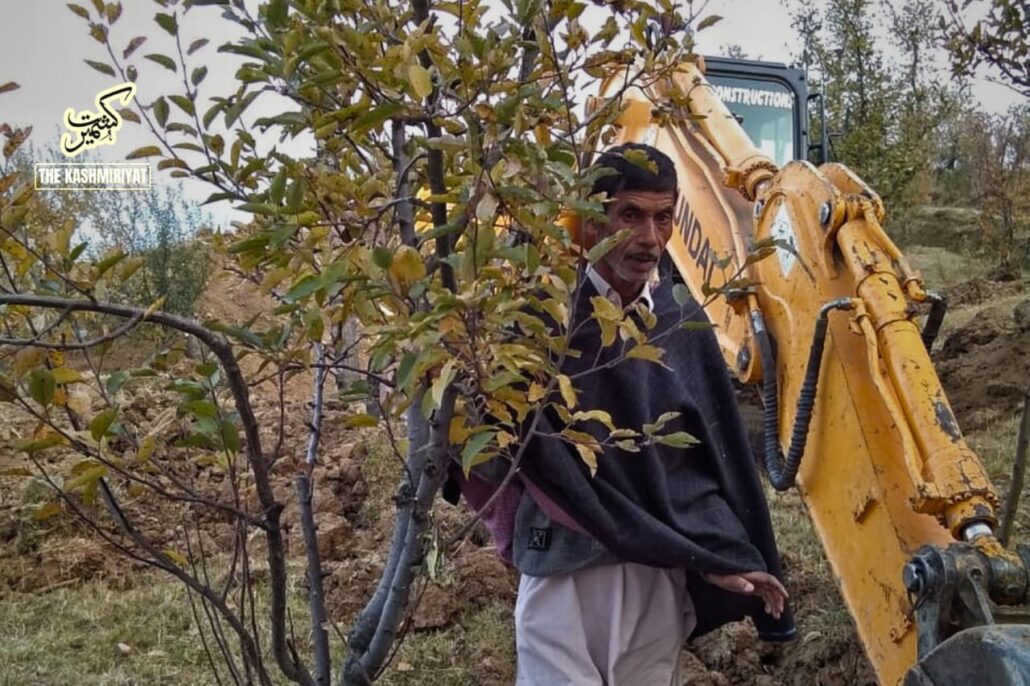
Nahida Mushtaq, Abu Bakr Maqbool
Mohammad Maqbool, an elderly farmer from Salamkania, a remote village in south Kashmir’s Kulgam district, walks around the land where his apple and walnut orchards once stood. Now, little remains.
“It takes a lifetime to nurture these orchards,” he says, his voice heavy with loss.
“A farmer invests everything, hoping they will sustain future generations. We were never against development, but the compensation we were promised has turned into a nightmare.” Maqbool lost his land to a road construction project in 2017—one of many farmers caught between progress and broken assurances.
The construction of a bypass road in Salamkani, Damhal-Hanjipora, Kulgam, under the Pradhan Mantri Gram Sadak Yojana (PMGSY), has resulted in at least two dozen families losing their agricultural land.
Officials stated that the project, undertaken as part of the PMGSY, aims to “improve connectivity and reduce accidents.”
The Pradhan Mantri Gram Sadak Yojana (PMGSY) is a flagship scheme aimed at providing “all-weather road connectivity to unconnected habitations.”
According to the Jammu and Kashmir Public Works Department (JKPWD), the implementation of PMGSY has been significant in the region, with a total of 9,479.41 kilometer of roads constructed across Kashmir.
In Kulgam, the scheme included the construction of a bypass road linking Khuri Batpora (KB Pora) to Czimer (Tsimer). The work on the project initially started with earth cutting in the autumn of 2016, but then its official commencement was deferred to 2017. The road became functional between 2021 and 2022.
This 16.2-kilometre road led to the acquisition of approximately 8–10 Kanal (1–1.25 acres) of agricultural land. Of this, 0.5625 acres were used for the road, while an additional 0.6875 acres were cleared during construction. In Salamkani alone, about 10 Kanal (1.25 acres) of land was taken.
Additionally, the Nagam block of Noorabad, located 15 km from the Kulgam district headquarters, served as the financial backbone for several families.
Twenty-one (21) families were directly impacted by the uprooting of their orchards for this project.
According to the affected landowners, they were compensated ₹2.8 to ₹3 lakh per Kanal, an amount they consider substantially low.
Mashqoor Ahmad Lone, speaking to The Kashmiriyat, said, “This land was full of apple, walnut, willow, and other trees, which were our source of livelihood. After the orchards were uprooted, we reached out to officials for compensation, but all in vain.”
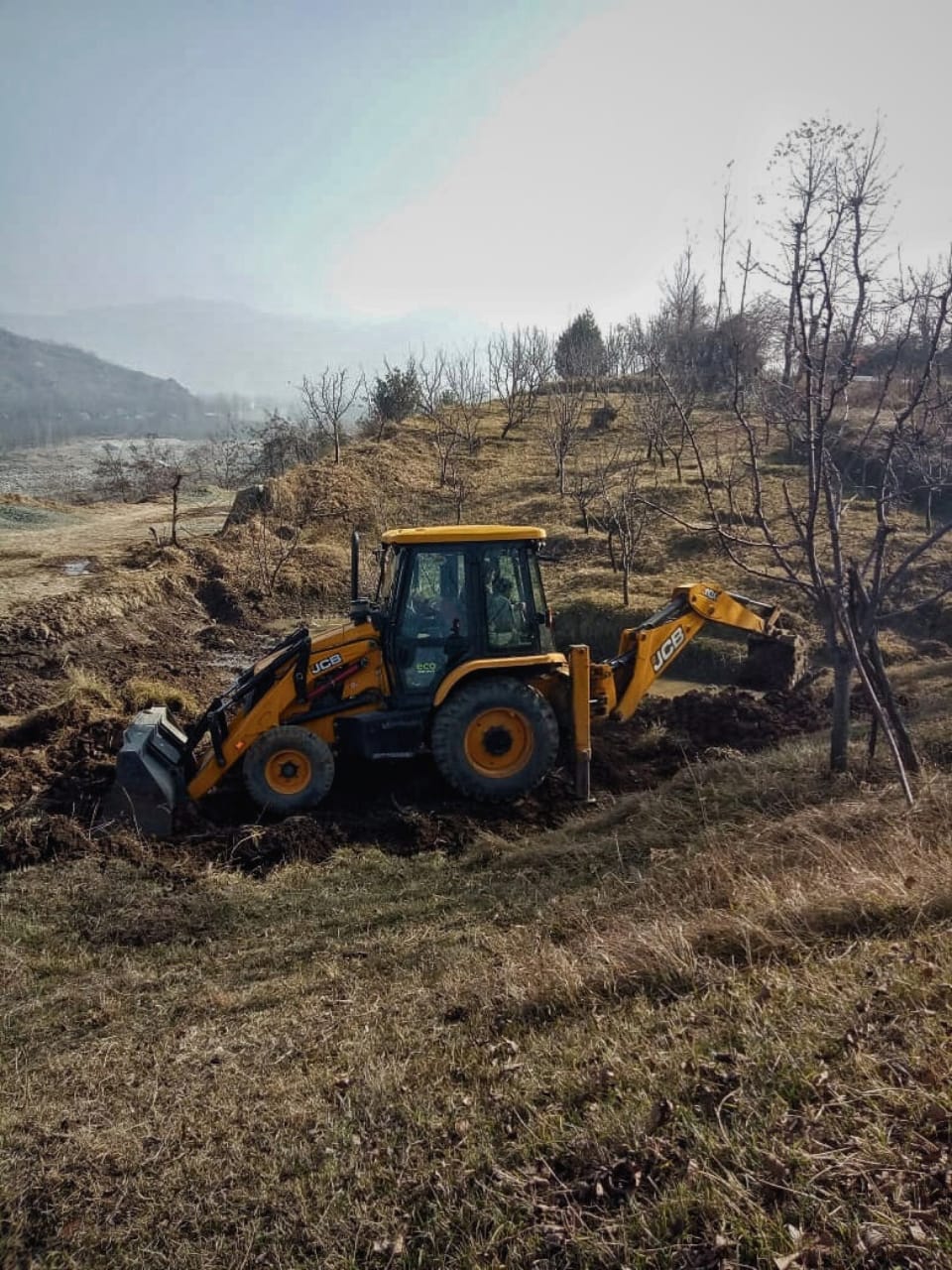
A promised compensation turns into a nightmare
Although more than seven years have passed since the project began, farmers in Nagam and Salamkani, DH Pora, claim their pursuit of compensation remains unresolved.
They have appealed to the state government to fulfill the compensation promised by the then coalition government of the People’s Democratic Party (PDP) and Bharatiya Janata Party (BJP), urging that it reflect the actual market rate under the PMGSY scheme.
According to the landowners, the current market rate stands at ₹15 lakh per Kanal (1 Kanal = 1.25 acres).
Locals, speaking to The Kashmiriyat, complained about unclear official documentation and the absence of public statements from officials.
“The destruction of our ancestral lands mirrors the injustice we face. Justice is not charity—it’s an unfulfilled promise that must be honored,” said Mudasir Ahmad Lone, a resident of Salamkani, Damhal Hanjipora, Kulgam.
Vocal representatives of the affected farmers have been leading the advocacy for fair compensation.
Sajad Ahmad, one of the advocates who also lost his land to the project, shared his frustrations over repeated visits to the offices of the Deputy Commissioner, PMGSY, and the Tehsil.
“We used to go to Srinagar to meet top officials, but the response was never in our favor,” he recalled. “The officials involved earlier are either retired or transferred now, making it difficult to find a solution.”
Now, with his savings exhausted on travel expenses, he feels the process has only drained him further.
For families that once lived self-sufficiently, the shift has been devastating. The loss of fertile land has forced many farmers to seek livelihoods elsewhere.
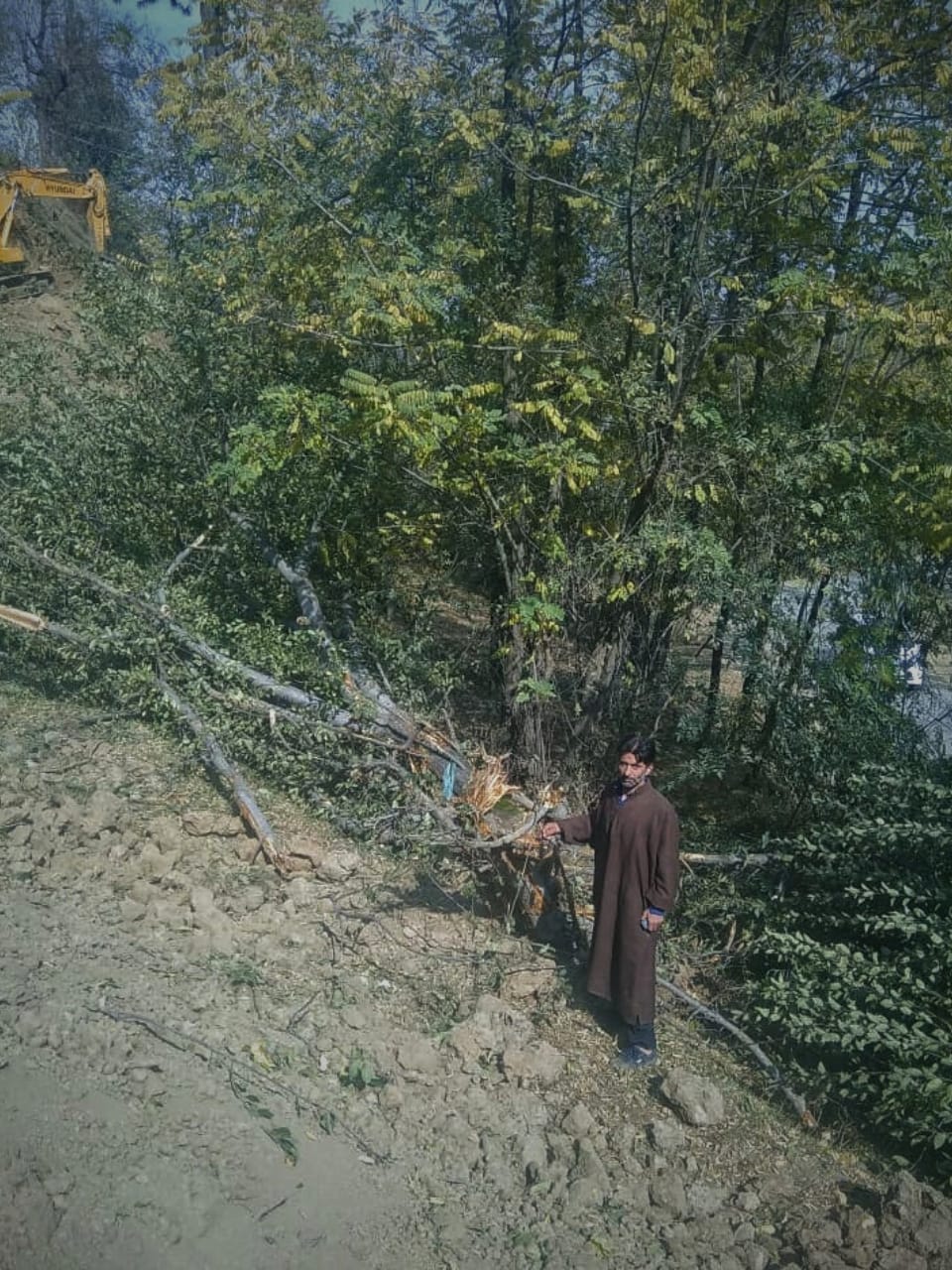
From Landowner to Laborer: Waseem Lone’s Struggle After Losing His Orchard
For these families, the orchards were not just a source of income but also a symbol of heritage. The loss of these trees has not only disrupted their financial stability but also shattered the connection to their ancestral roots.
Waseem Ahmad Lone’s life once revolved around his orchard. As the elder son of Mohammad Rajab Lone, he lived with his nuclear family of five in Salamkani Nagam, where fruit-bearing trees sustained his household. “I had maintained my lifestyle according to the income generated from orchards,” he said. But everything changed when his land was acquired for a development project. “Once the land was cleared, I was in dire financial straits.”
With his best productive land gone, Waseem struggled to provide for his family. “After the fruit-bearing trees were destroyed, we now rely solely on daily wage work,” he explained.
The loss of his orchard forced him into an unfamiliar and unstable life. “We keep visiting Srinagar, Jammu, and Punjab in search of bread as our only source of income has been turned into a bypass road.”
Despite his hardships, Waseem did not stay silent. Along with other affected landowners, he repeatedly visited government offices, seeking justice. “We would go turn by turn, as the number of affected people was large,” he recalled. Personally, he made sure to cooperate with others, hoping their collective voices would be heard.
But the wait for relief was long, and survival became a daily struggle. “Losing the orchard was more than just losing land—it was losing a way of life,” he said. Forced to migrate to other states for work, he now moves between cities, taking up labor wherever he can find it. “I never imagined I would have to leave my home and work as a laborer in another state just to survive.”
Many families have been forced to take loans to cover basic expenses such as education, marriage, and healthcare. Several farmers had availed themselves of the Kisan Credit Card (KCC) scheme, introduced in 1998 to provide financial assistance for agricultural inputs and production needs.
Ghulam Hassan, another landowner compelled to take out a loan, shared, “The worst consequence of this incident is its impact on our children’s education. We were forced to lower our education standards.”
According to Hassan, some villagers have had to sell their remaining land and even mortgage their belongings just to arrange funds for their children’s weddings.
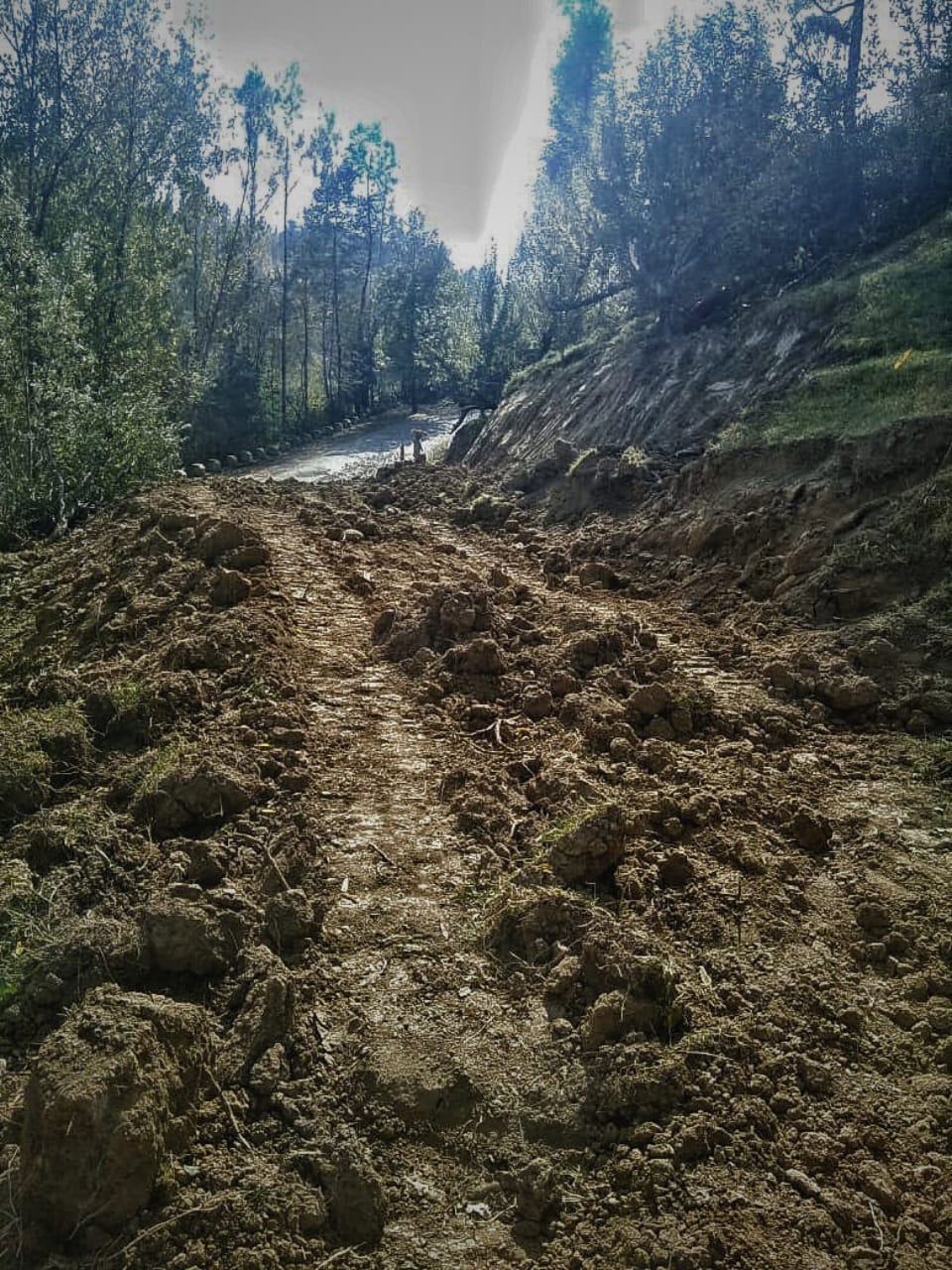
Environmental consequences:
Beyond economic devastation, the road construction has had severe environmental consequences.
The orchards that once covered the area played a crucial role in maintaining the region’s ecological balance. However, farmers report that with the trees gone, soil erosion and landslides have increased, rendering the remaining land infertile.
Waseem Lone, highlighted the environmental fallout. “The topography of the land is uphill, and when it was cleared with machines, it caused soil erosion, leading to landslides. The little land left for us is of no use.”
According to Global Forest Watch, from 2001 to 2023, Kulgam lost 115 hectares of tree cover, a 0.45 percent decrease since 2000, resulting in 50.7 kt of CO₂e emissions. Between 2000 and 2020, the district experienced a net change of 5.33 kha (16 percent) in tree cover, while gaining only 6.24 kha—just 11 percent of all tree cover gained in Jammu Kashmir.
Despite the drastic reduction in green cover affecting local biodiversity, no measures have been taken to mitigate these losses.
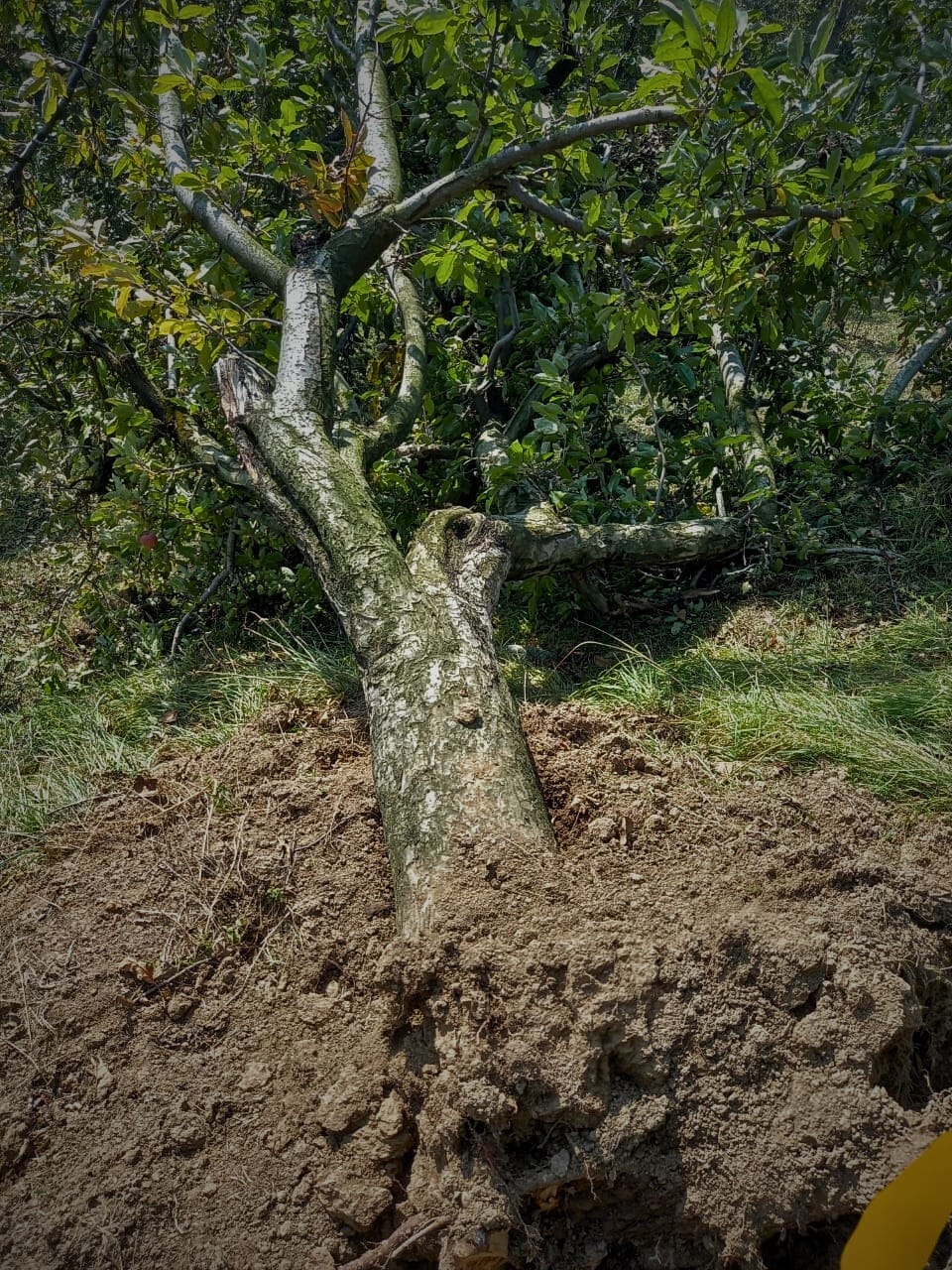
Immediate Actions Needed For Compensation
The families have demanded the immediate disbursal of compensation, including additional payments for the financial hardships caused by the prolonged delay.
Mudasir Ahmed Lone, a resident, recalled, “When the land was cleared, the Assistant and Junior Engineer assured us of compensation for both the land and the trees. It has been seven years now, and only the amount for the land has been given. Moreover, we were threatened with police involvement.”
Speaking to The Kashmiriyat, the District Commissioner (DC) of Kulgam, Athar Amir Khan, acknowledged the concerns raised by the affected families and explained the legal framework for compensation.
He stated, “The compensation for the land is given according to the land acquisition. Whatever the government price for the land was in 2017, the compensation would be allocated accordingly. There is a precise discipline in the constitution— the Land Allocation Act—according to which the steps are taken.”
Addressing concerns about policy changes, he added, “Jammu Kashmir has seen many changes, like the abrogation of Article 370 and the Land Acquisition Act of 2022. So, the compensation for land is given according to the government rates in a particular area.”
The Land Acquisition Rehabilitation & Resettlement Act (LARR 2013) provides guidelines for fair compensation and aims to bring transparency to land acquisitions. However, at the time of this construction, the act was not applicable in Jammu Kashmir under the provisions of Article 370.
Executive Engineer PMGSY, Shabir Ahmad Tak from Salamkani responded, “Funds will be provided once the paperwork is completed. They have received the amount according to the funds that were available. They now have to wait for additional funds. Once those are received, the compensation amount will be allocated accordingly.”
Mohammed Maqbool expressing his frustration said, “Despite the government’s assurances, we remain unconvinced and uncertain about our future. The hardships we have endured deserve justice, and our voices must be heard by those in power. This isn’t just about our compensation—it’s about Kashmir, about the generations to come. If we stay silent today, we risk losing everything that remains.”




